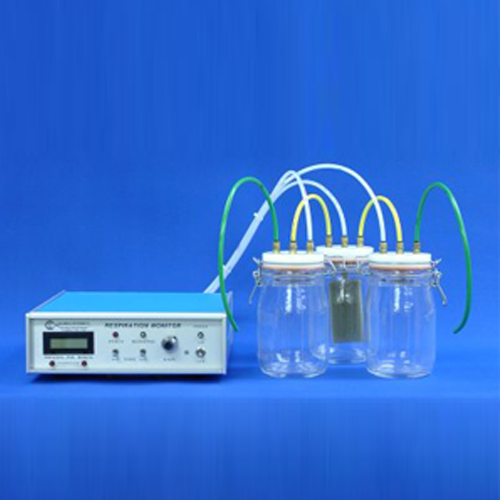company
Respiration Frequency Monitor RM-80
-
The RM-80 measures changes in pressure produced by a subject respiring within an enclosed space. The changes in pressure reflect the depth of respiration while the cyclic variations of the pressure signal over time reveal respiration frequency (breaths per minute). This technique, commonly called whole body plythesmography, is the basic operating principle of the RM-80. Improvements made by Columbus Instruments have allowed this method to be employed in a chamber through which a constant flow of fresh air passes. This allows experiments to continue without the need for periodic refreshing of oxygen depleted air. The RM-80 also incorporates an improved differential method of pressure measuring that reduces errors and artifact caused by environmental variations of pressure in the work place. The combined design features of the RM-80 produce a reliable method for monitoring respiratory activity in small laboratory animals.
The RM-80 is a stand-alone system comprising a pressure sensor, chamber and a fresh air delivery system. The instrument displays respiration rate in breaths per minute. An apnea detection system signals an alarm condition if no respiration is detected for 10 seconds. The RM-80 provides connections that supply signals related to the monitored respiratory parameters. An analog voltage is available that is proportional to the pressure changes within the chamber. In addition, an analog voltage is available that is proportional to the rate of respiration. These signals may be presented to strip chart recorders or data acquisition systems. Other outputs are provided that indicate apnea and respiratory activity in the form of open collector digital outputs. These event signals may be accumulated by employing any of Columbus Instruments' Computer Counter Interface products.
keyword : physiology, respiratory, columbus instruments
- READ MORE
- QUOTE
